Money and Capital Market Analysis: Shares Overview and Comparison
VerifiedAdded on 2023/01/17
|12
|968
|48
Presentation
AI Summary
This presentation provides a comprehensive analysis of money and capital markets, focusing on the distinctions between ordinary and preference shares. It begins by defining both share types, highlighting their roles in corporate finance and the distribution of profits. The presentation then delves into a detailed comparison, contrasting ordinary and preference shares across several key aspects, including dividend payments, capital repayment priority, rate of dividend, voting rights, and convertibility. Furthermore, it explores the similarities between these share types, such as their role in forming share capital and the challenges faced by shareholders. The presentation also discusses various types of preference shares, such as redeemable, convertible, cumulative, and participating shares, and different types of equity shares. Finally, it includes a practical example using Woolworths' financial data to illustrate key concepts and concludes with a summary of the essential takeaways for investors to understand the implications of choosing between ordinary and preference shares.
1 out of 12

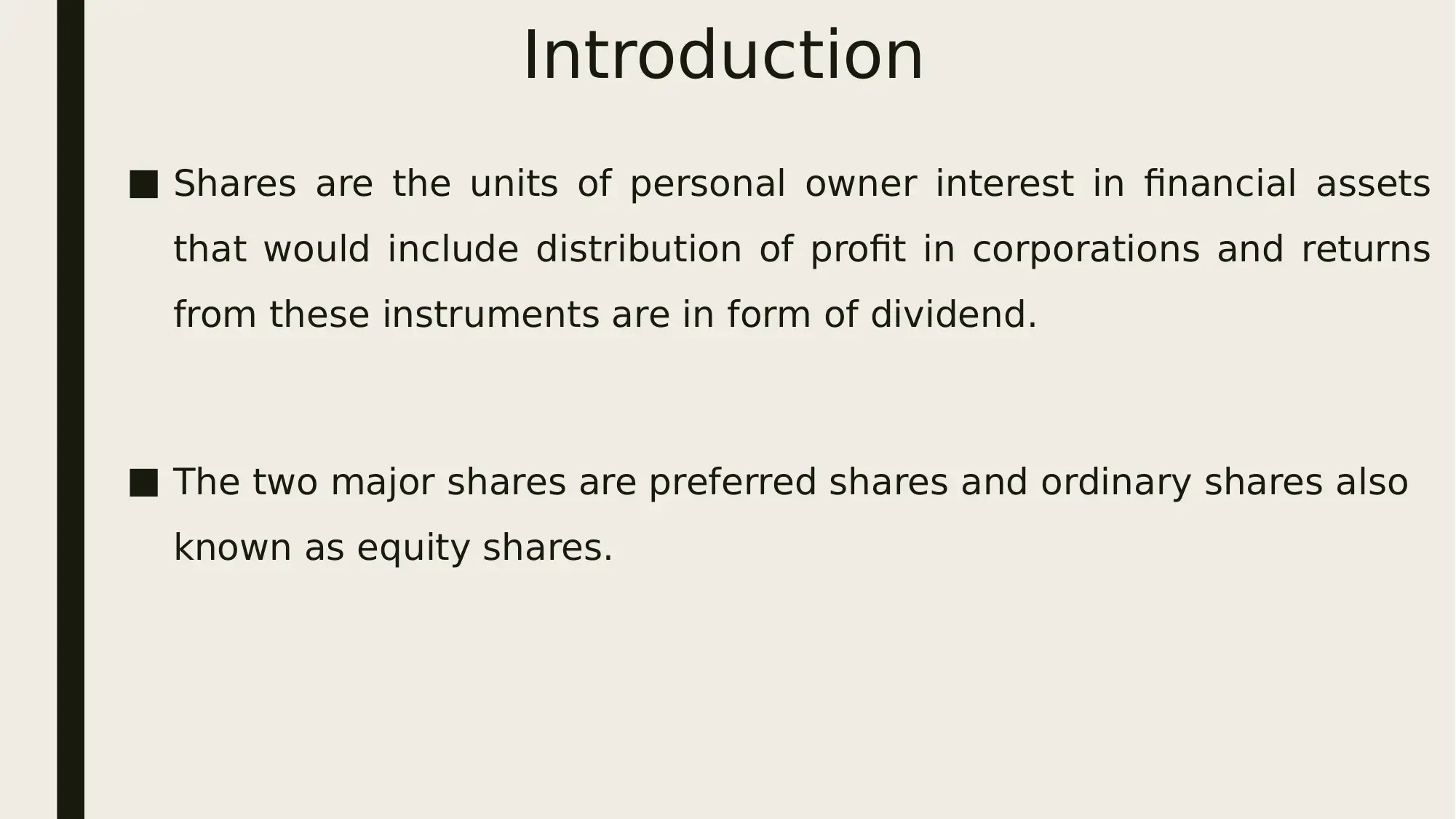
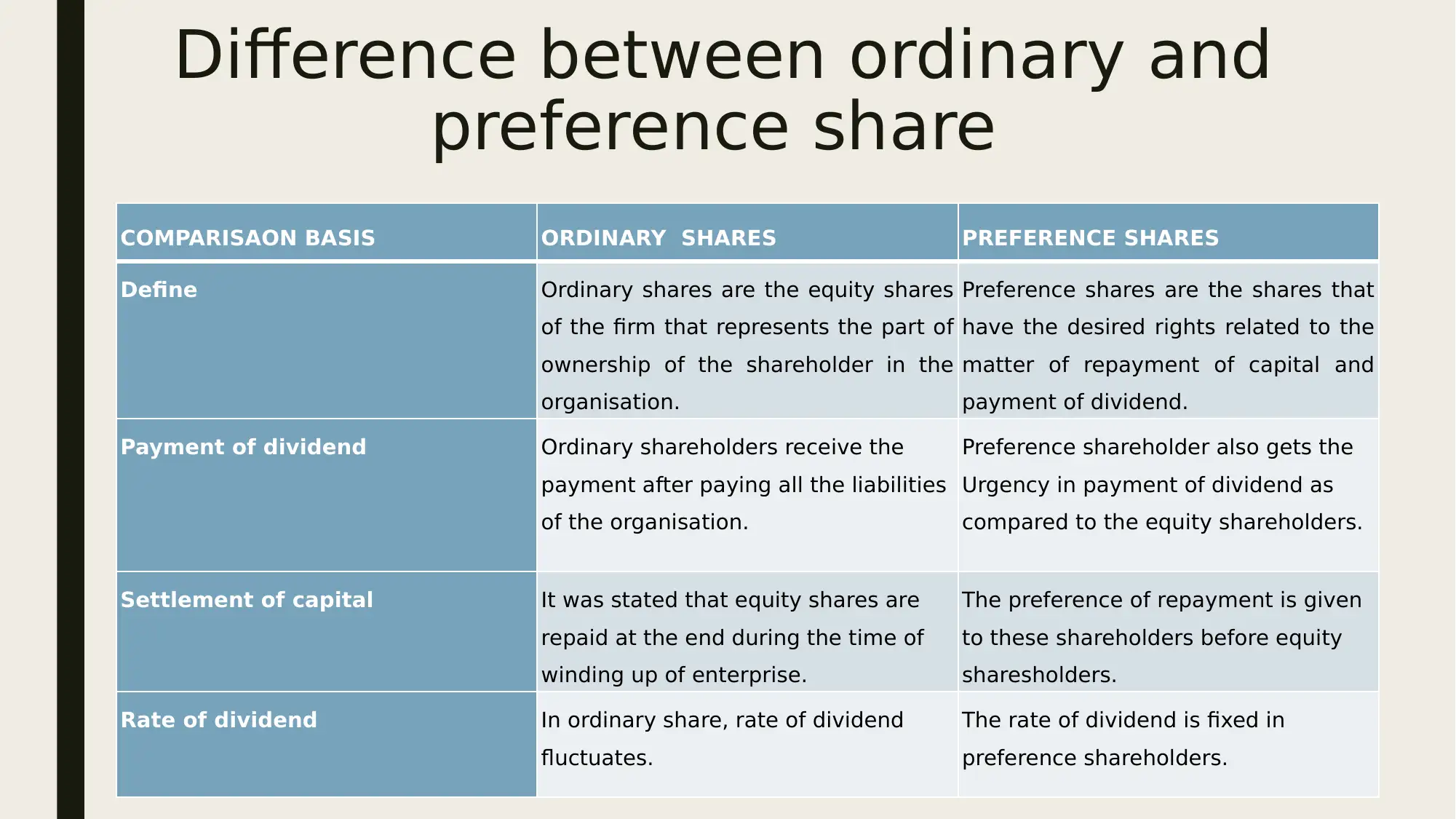

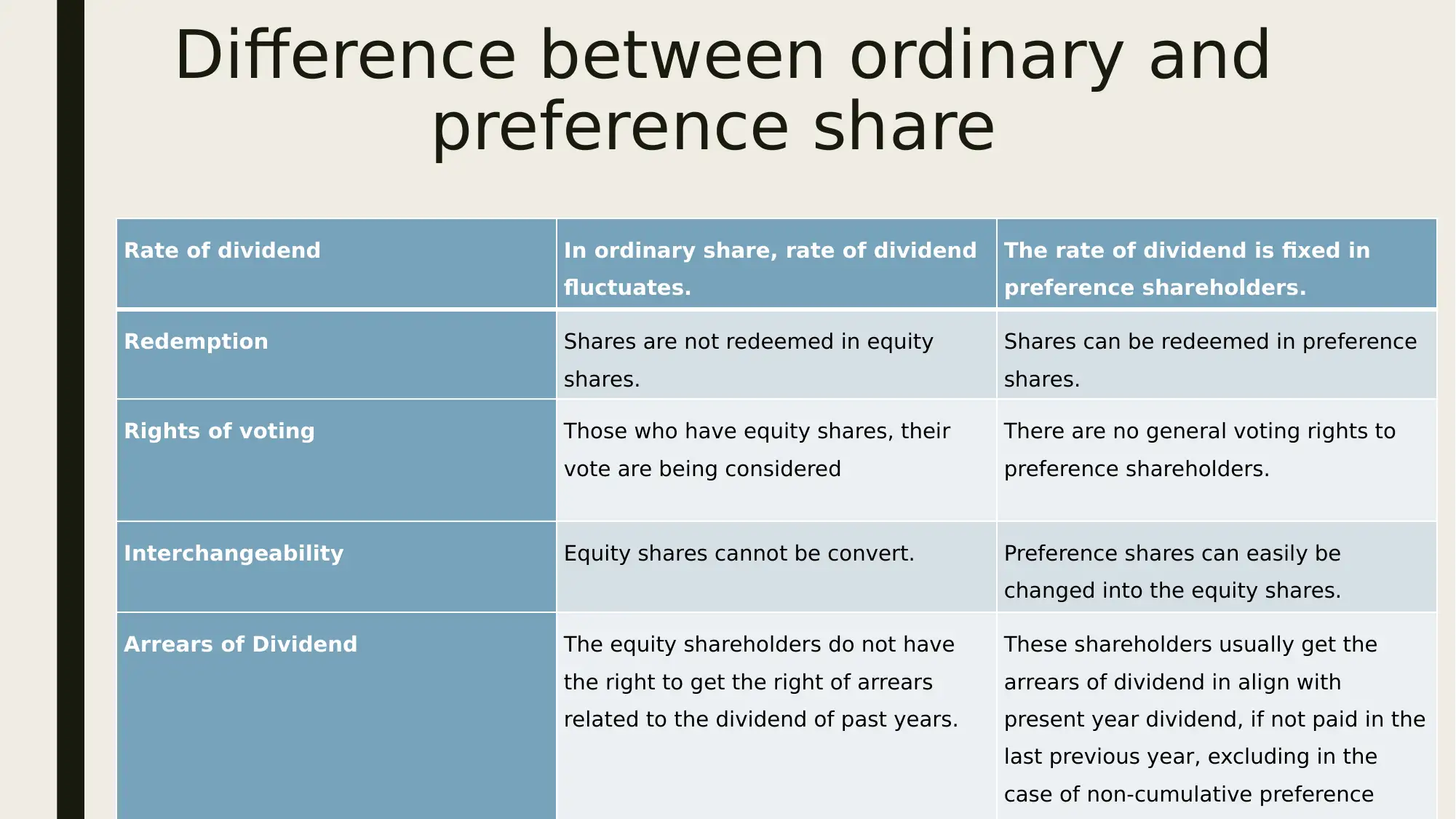
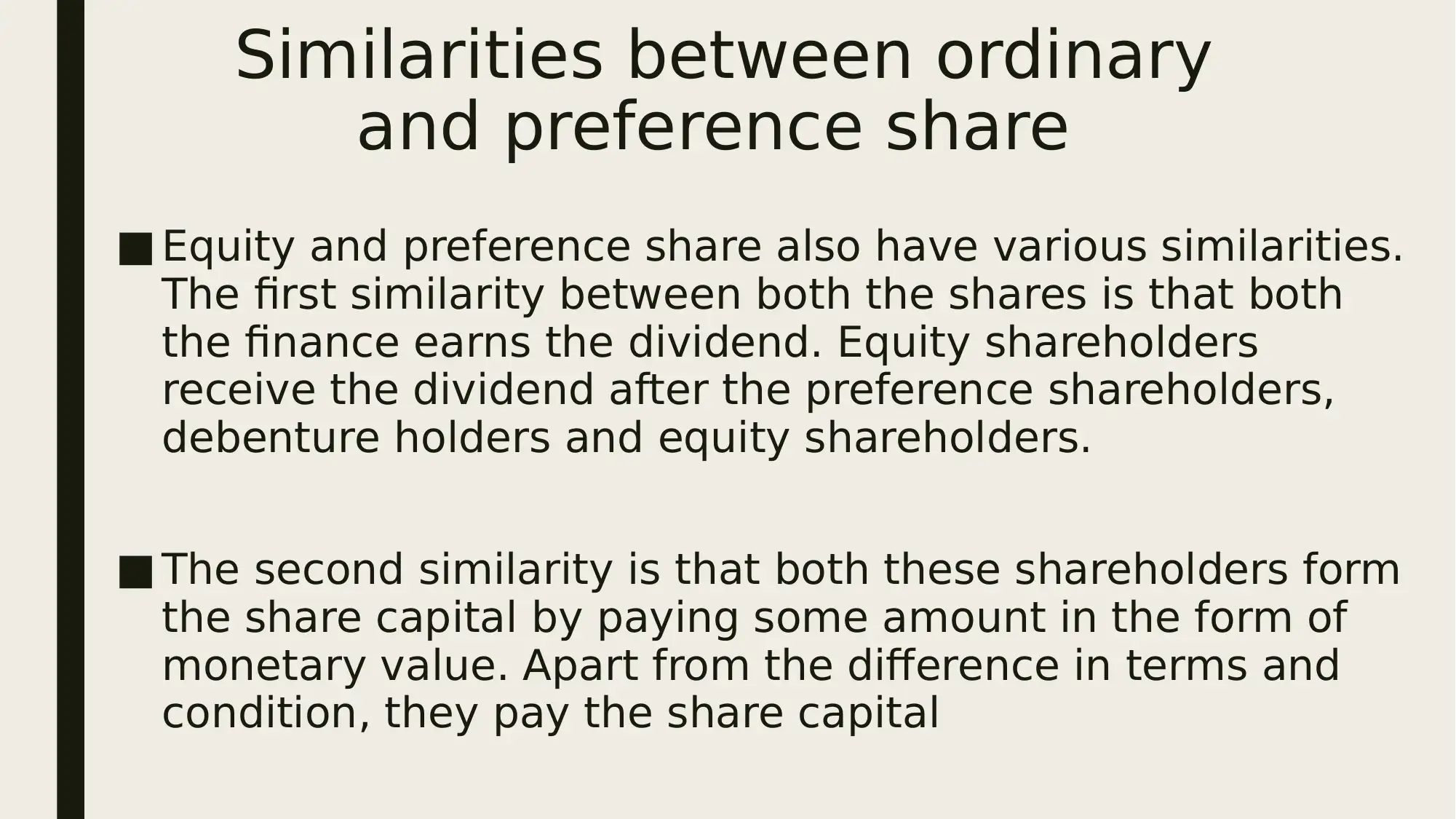
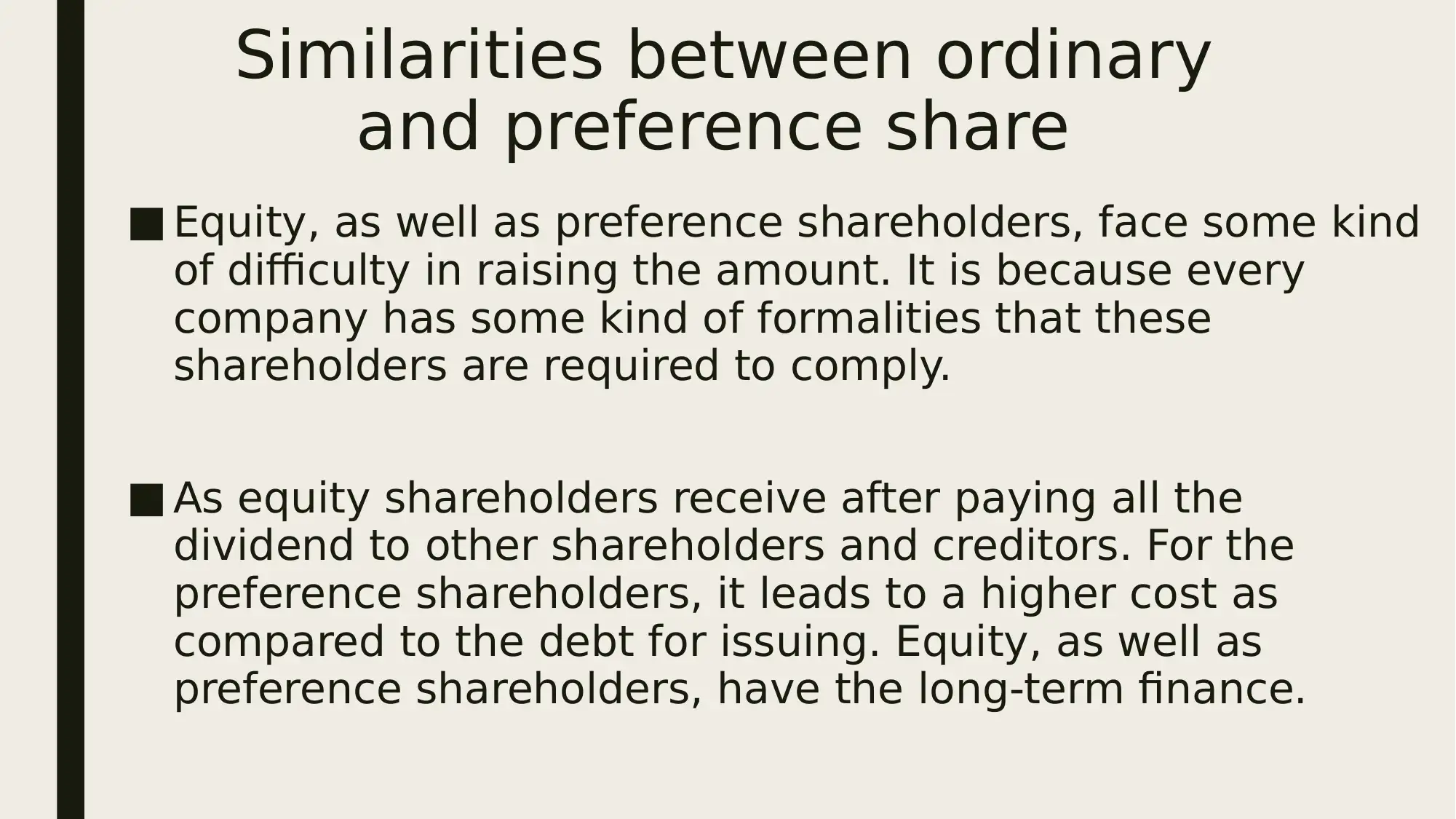
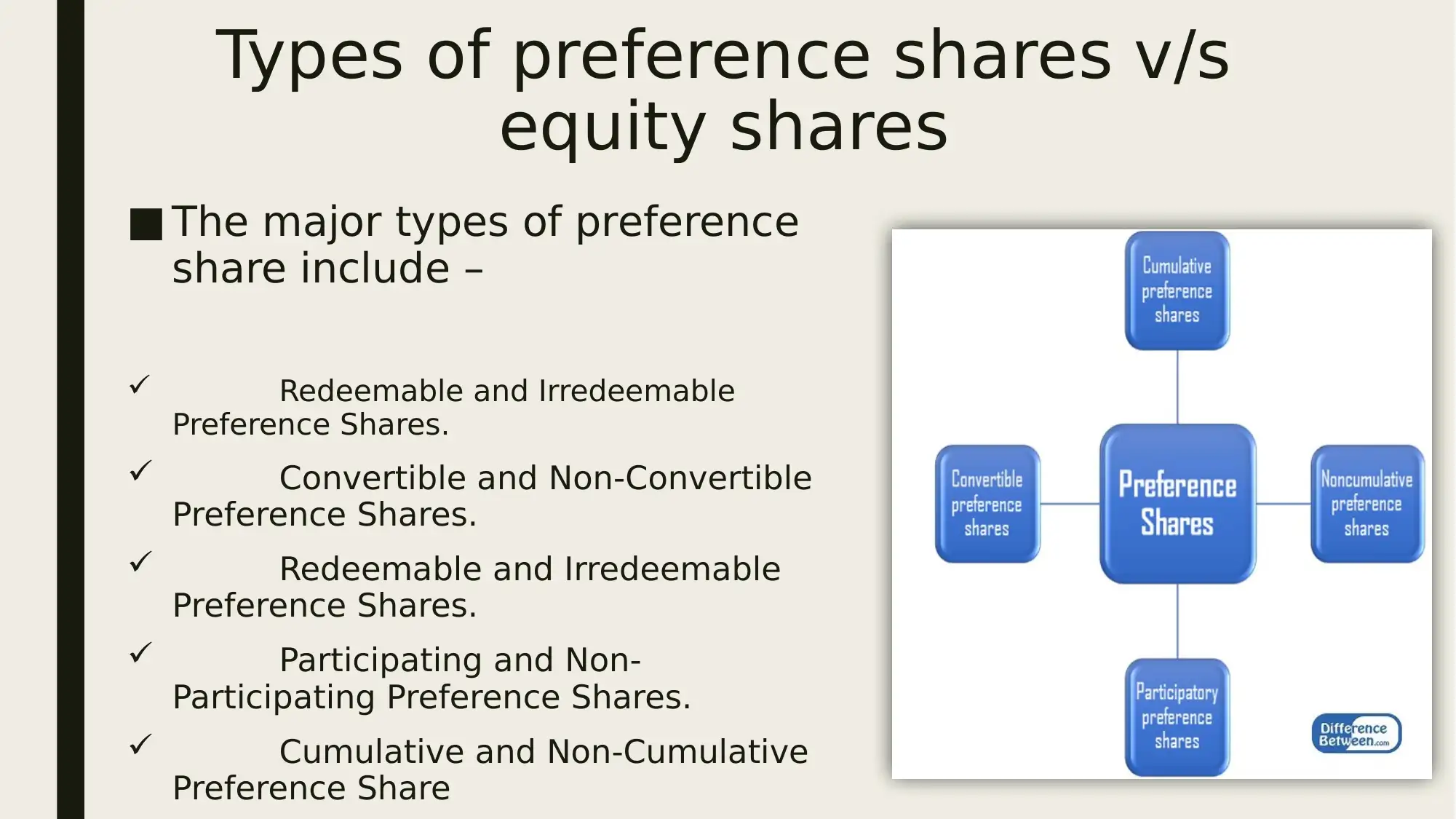
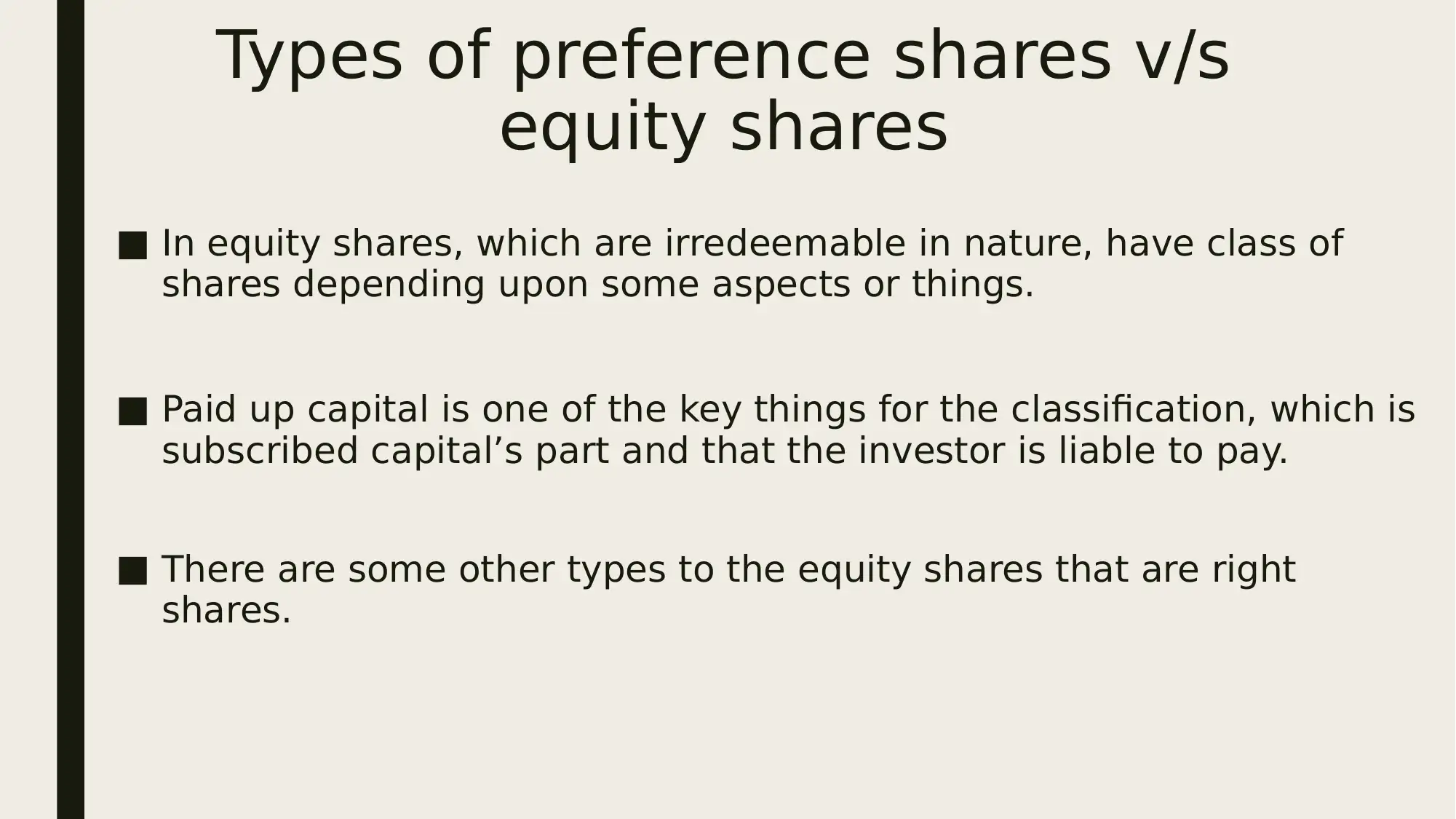
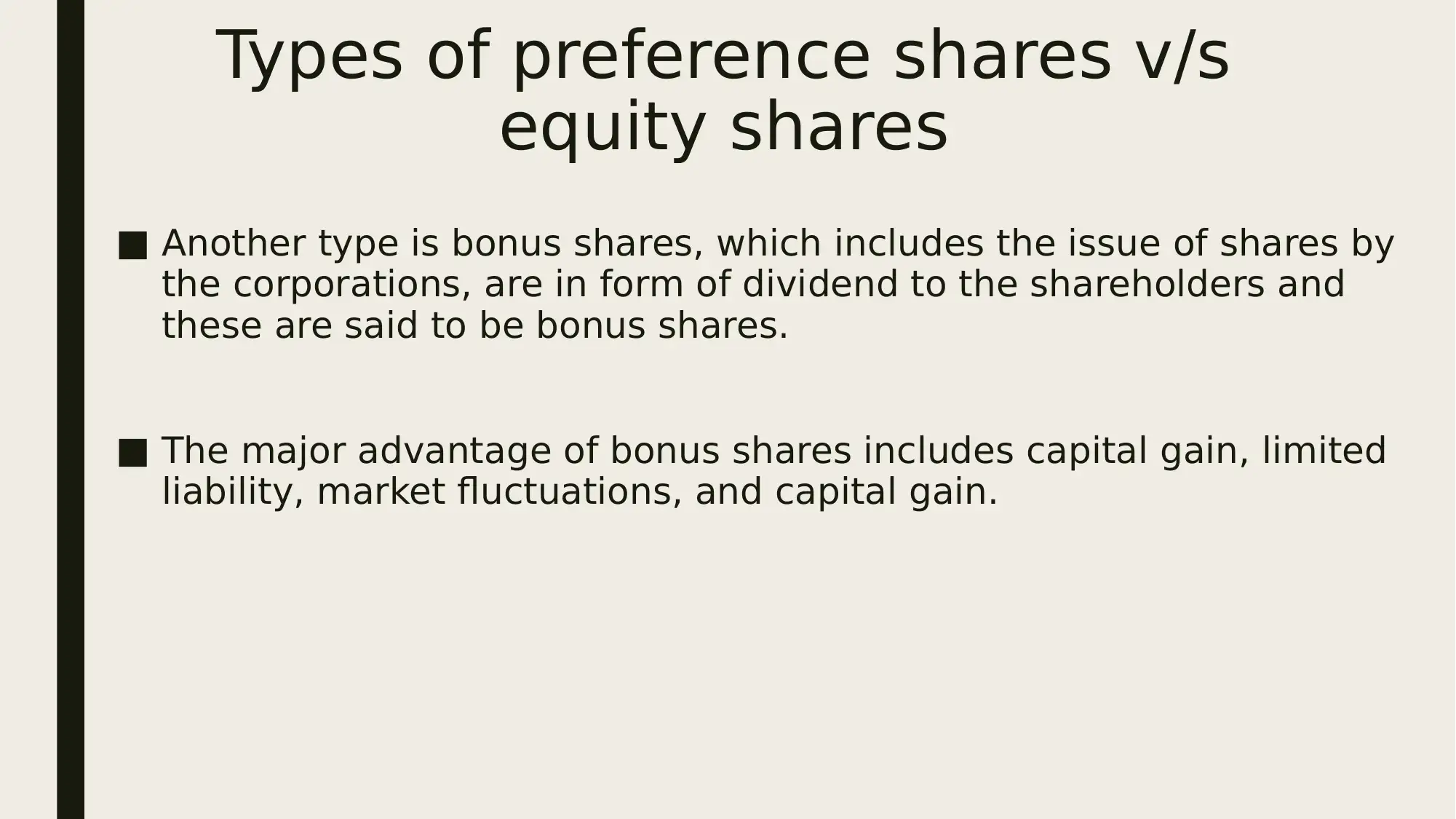








![[object Object]](/_next/static/media/star-bottom.7253800d.svg)